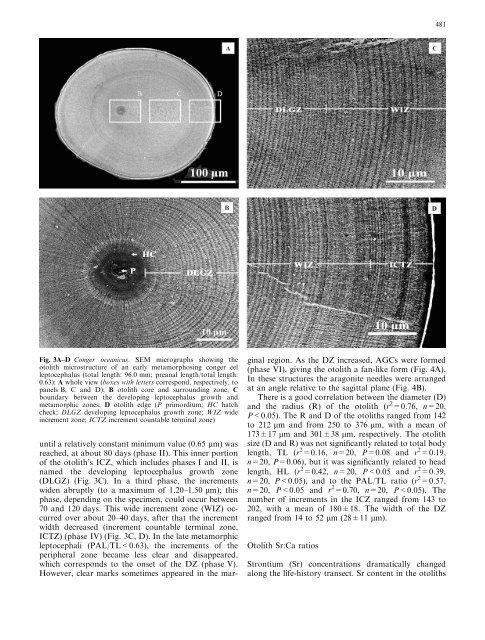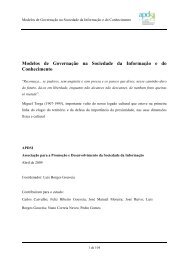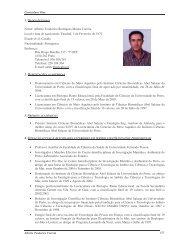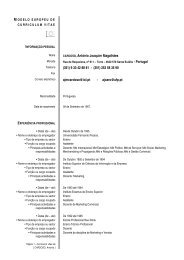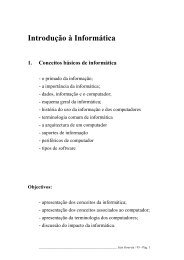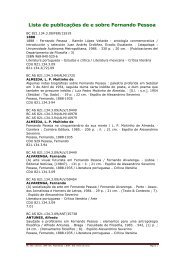Early life history of the American conger eel ... - ResearchGate
Early life history of the American conger eel ... - ResearchGate
Early life history of the American conger eel ... - ResearchGate
Create successful ePaper yourself
Turn your PDF publications into a flip-book with our unique Google optimized e-Paper software.
481Fig. 3A–D Conger oceanicus. SEM micrographs showing <strong>the</strong>otolith microstructure <strong>of</strong> an early metamorphosing <strong>conger</strong> <strong>eel</strong>leptocephalus (total length: 96.0 mm; preanal length/total length:0.63): A whole view (boxes with letters correspond, respectively, topanels B, C and D); B otolith core and surrounding zone; Cboundary between <strong>the</strong> developing leptocephalus growth andmetamorphic zones; D otolith edge (P primordium; HC hatchcheck; DLGZ developing leptocephalus growth zone; WIZ wideincrement zone; ICTZ increment countable terminal zone)until a relatively constant minimum value (0.65 lm) wasreached, at about 80 days (phase II). This inner portion<strong>of</strong> <strong>the</strong> otolith’s ICZ, which includes phases I and II, isnamed <strong>the</strong> developing leptocephalus growth zone(DLGZ) (Fig. 3C). In a third phase, <strong>the</strong> incrementswiden abruptly (to a maximum <strong>of</strong> 1.20–1.50 lm); thisphase, depending on <strong>the</strong> specimen, could occur between70 and 120 days. This wide increment zone (WIZ) occurredover about 20–40 days, after that <strong>the</strong> incrementwidth decreased (increment countable terminal zone,ICTZ) (phase IV) (Fig. 3C, D). In <strong>the</strong> late metamorphicleptocephali (PAL/TL


